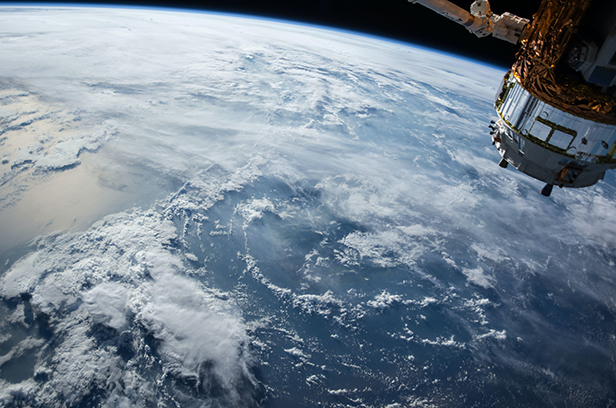The Legality of Using Satellite Images In Your Product
Written November 3, 2020

Guess what else Sir Issac Newton did? He figured out the math behind satellites in 1687. Today there are 2,666 satellites orbiting the earth doing all sorts of amazing things like monitoring glacier melt and providing internet access to remote areas. They’ve been used to prove the existence of China’s Uighur internment camps and one, the International Space Station, has been home to over 200 astronauts and cosmonauts since it’s launch on November 2, 2000.
I learned all of this fascinating information on satellites this week when a friend asked me if it is legal to store satellite images of people’s backyards for use in his landscape design app?
The short answer is yes, it’s completely legal. Once you purchase the images, they are yours to use. It’s like purchasing a stock photo.
Our privacy is currently protected by one regulation that limits the resolution of images taken by commercial satellites to 25 centimeters, or about 10 inches. That’s close enough to see a car, but not close enough to tell the make and model. Importantly, this regulation only governs U.S. satellites. Currently, there are 700 observational satellites in orbit. The U.S. controls about 50%, China 18% and India, Japan, and Russia control about 3% each. As technology improves, a global standard for privacy will be necessary.
Advances in satellite technology have already reached the point where one U.S. company, BlackSky Global, has built a constellation of small satellites that will revisit most major cities up to 70 times per day. That might not be enough to track an individual’s every move, but it would certainly show what times of day someone’s car is typically in the driveway.
While companies have been mindful of privacy concerns, Google’s algorithms automatically blur faces and license plates, for example, an international policy is necessary. International space law today is mainly governed by five documents, the last of which was enacted in 1979. None of these documents adequately address individual privacy issues.
While we wait for further regulation, our privacy may be protected by cost. It’s -expensive- to launch satellites that can take images under 25 centimeters because the satellites have to be large enough to hold a big telescope. Large satellites can easily cost $300 million dollars to launch and it’s unclear if there will be enough demand for detailed photos to make it a viable business model.
For now, keep user privacy in mind when designing a product. For U.S. users, follow the The National Institute of Standards and Technology (“NIST”) Privacy Framework which was earlier this year. The Privacy Framework offers guidance on how to comply with the privacy regulations individual states have adopted. For example, if you are storing personally identifiable information of Colorado residents you must have “a written policy for the destruction or proper disposal” of that information. The Privacy Framework provides guidance on proper disposal strategies.
And always inform your users what personal information you’re storing with a properly drafted Privacy Policy.
Startlaw Inc.
8 The Green STE R
Dover, DE 19901
(332) 217-1471
office@start.law
Contact Us
Privacy
Terms & Conditions
Website Disclaimer
The information provided on this website is for general informational purposes only. It is not intended to be, and should not be construed as, legal, financial, or professional advice.
© 2023 Startlaw Inc.